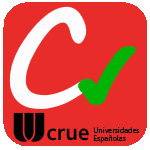Título
Hardening prediction of diverse materials using the Digital Image Correlation techniqueFecha de publicación
2018Versión
PostprintTipo de documento
ArtículoArtículoIdioma
InglésDerechos
© 2018 Elsevier Ltd.Acceso
Acceso abiertoVersión de la editorial
https://doi.org/10.1016/j.mechmat.2018.05.007Publicado en
Mechanics of Materials Vol. 124. Pp. 71-79. September, 2018Editorial
ElsevierPalabras clave
Hardening modelDIC
Isotropic hardening
Metal forming
Resumen
In recent years, due to the introduction of higher resistance materials in the automotive sector, sheet metal-forming tool-makers have been forced to deal with more challenging process designs. Theref ... [+]
In recent years, due to the introduction of higher resistance materials in the automotive sector, sheet metal-forming tool-makers have been forced to deal with more challenging process designs. Therefore, the optimisation of the manufacturing process has become a key factor in obtaining a part which fits the required tolerances, and the finite element method (FEM) is the most widely used technique to speed up that optimisation time. However, to obtain a numerical result as close as possible to those of industrial conditions, the FEM software inputs must be highly accurate. The present work is focused on the hardening extension of the currently available reduced-formability materials, as it is a key factor in the correct prediction of the stress state and hence, of the springback during a sheet metal-forming process. The objective in this work was the selection of the most appropriate hardening model to extend the flow curve beyond the necking limit for a wide variety of material families currently utilised in the industrial environment. To carry out that analysis, a digital image correlation (DIC) technique was utilised during conventional tensile tests to extend the experimental flow curves of the analysed materials. Commonly used hardening models were fitted to the experimental tensile flow curves with the aim of selecting the model that best predicts the hardening behaviour of each analysed material family. The results showed that the DIC technique was valid for the extension of the hardening curve of the analysed materials and for the final selection of the most suitable hardening model for each analysed material family. [-]
Sponsorship
Gobierno de EspañaID Proyecto
info:eu-repo/grantAgreement/GE/Programa Estatal de Investigación, Desarrollo e Innovación Orientada a los Retos de la Sociedad, en el marco del Plan Estatal de Investigación Científica y Técnica y de Innovación 2013-2016/RTC-2015-3643-4/ES/Nueva generación de troqueles más estables y con vida útil prolongada para el conformado de aceros avanzados de alto límite elástico para automoción/HRDColecciones
- Artículos - Ingeniería [758]





















